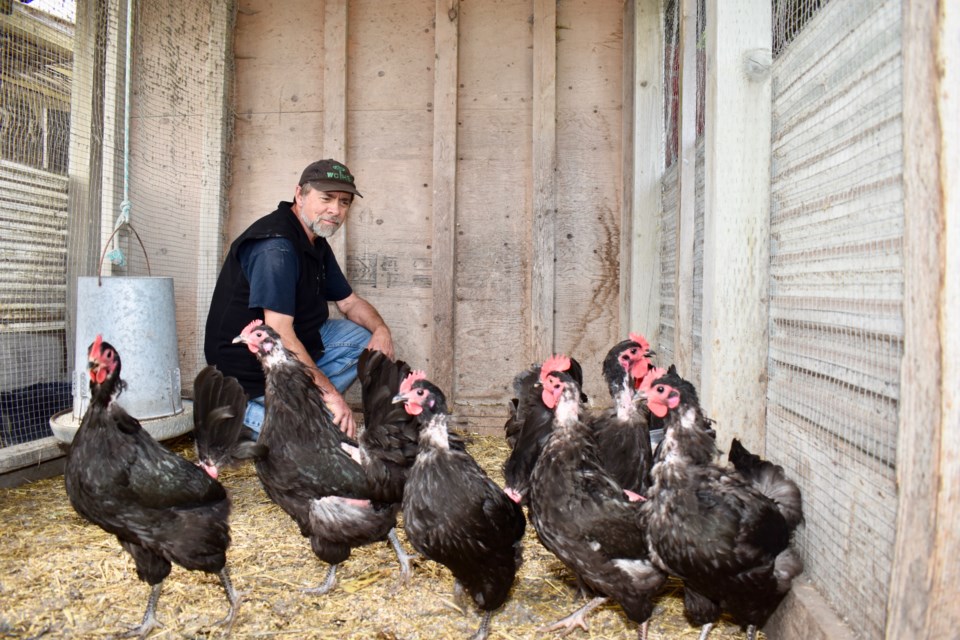Joanne Fisher has been raising heritage chickens in east Richmond for dozens of years and, while she likes the eggs, she said just raising chickens brings her joy.
“There’s nothing like seeing their little happy faces when you go to feed them in the morning,” she said.
Fisher grew up on a farm, so producing her own food — eggs and organic vegetables — is something that comes naturally to her and she currently lives in the Agricultural Land Reserve (ALR) on a property large enough for chickens.
Richmond city council is looking at allowing backyard chickens anywhere in the ALR — currently restricted in Richmond to properties larger than 2,000 square metres — as well as allowing them in single-family residential areas.
However, the backyard chicken issue has been known to ruffle the feathers of some residents, who have expressed concern about disease, noise and smell.
“You can see in other communities how this pits neighbours against neighbours — we don’t want that,” said Coun. Linda McPhail at a recent committee meeting.
McPhail said she wants community consultation on the subject before moving ahead. For example, how many chickens should be allowed and on what sized lots.
Cindy and Larry McPherson currently have nine black Australorp hens that eat their table scraps and produce fresh eggs every day for them. They know what their hens are eating and what’s in their eggs, and they can put all their organics back into the land.
“Between (the hens) and the compost, we don’t have a green bin,” Larry said.
After 20 years, keeping chickens on their ALR property has become a routine and easy way to get eggs.
Eight municipalities in the Lower Mainland currently allow backyard chickens in residential areas, with varying limitations.
During the discussion at committee, Coun. Harold Steves took issue with the legality of Richmond’s bylaw restricting where chickens are allowed in the ALR.
According to Steves, the Right to Farm Act allows chickens anywhere in the ALR and Richmond’s own bylaws are in contravention of this provincial act.
“Right now our bylaws are totally illegal — if anyone wants to have chickens in the ALR, they are allowed to it under the Right to Farm Act and they can have as many chickens as they want,” Steves said at last week’s committee meeting.
The city’s legal team is currently looking into the points raised by Steves, according to city spokesperson Clay Adams, and will address them when it comes back to council.
There are currently about 280 properties in the ALR that are under 2,000 square metres (about 21,000 square feet).
The item is expected back at council in early July.



